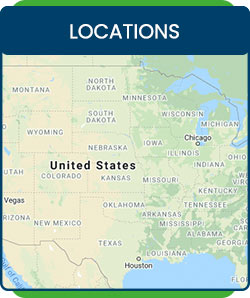How Do I Know if I Have a Headache or TMJ?
Wondering if your headache is caused by TMJ? TMJ-related headaches often come with jaw pain, clicking, facial discomfort, or difficulty chewing. If you’re unsure, our experienced team at Koala® Center For Sleep & TMJ Disorders can help diagnose and treat the cause. For more information, please contact us today or request an appointment online. We have convenient locations in Bloomington IL, Peoria/Dunlap IL, El Paso TX, and Wausau WI.


Table of Contents:
What does a TMJ headache feel?
How do I know if I have a headache or TMJ?
Where is a TMJ headache felt?
How do you get rid of a TMJ headache?
TMJ, which stands for temporomandibular joint, is the sliding hinge-action joint that controls the lower jaw, or mandible. Problems with this joint are referred to as temporomandibular joint disorders, or TMD. One of the most common symptoms of TMD is a headache, which is often the side effect of a failing or misaligned jaw joint. There are many causes of TMD, including: trauma to the jaw joint, which can cause damage to the joint or surrounding tissues; genetic factors; teeth grinding, or bruxism; as well as certain medications, for example, sedatives and anti-anxiety medications.
Although TMJ headache symptoms vary from person to person, headaches caused by jaw problems are often reported to feel like a tension headache. This is because the pain often results from tight muscles in the neck or jaw due to grinding; it may also be referred from the jaw itself. Head position may also play a role.
In addition to this, the timing of the headache is dependent upon the cause. For example, if grinding is the underlying reason, the headache may begin or worsen in the middle of the night and linger around until the morning. If a headache is caused by head position, it will typically worsen throughout the day.
Headache is one of the most common symptoms and is characteristic of many conditions, from neurological disorders to physical irregularities. It is also a prevalent sign of TMJ disorder, so it can be hard to differentiate the cause of a headache given there are so many potential causes. Fortunately, there are a few signs that can indicate whether a headache originates in the jaw rather than being a true headache, including:
– Painless clicking or popping when opening mouth
– Difficulty chewing
– Pain when chewing
– Earaches
– Locked jaw (difficulty opening or closing mouth)
– Pain or tenderness in jaw/temporomandibular joint
If you are experiencing any of the aforementioned symptoms alongside a headache, it is imperative to schedule a consultation with a TMJ specialist.
The TMJ is a highly motive joint that is constantly in motion, so when it is experiencing pain, it is hard to ignore. Headaches caused by TMJ dysfunction can vary in symptoms and severity, and with the estimated 10 million Americans that suffer from TMJ pain, it is bound to present unique symptoms in some people. However, headaches from TMJ disorder typically exhibit similar symptoms, even though they may come and go for some people, or they may be chronic as the disorder progresses and worsens over time for others. In general, these headaches usually feel as though they originate behind the eyes and along the sides of the face, adjacent to the masseter muscles.
TMJ headaches often respond well to conventional treatments. In mild cases, at-home therapies and lifestyle modifications may be sufficient enough to ameliorate the condition, but more advanced cases almost always require professional medical intervention. At-home treatments include:
– Massaging the Jaw — Applying a gentle pressure in a kneading motion can help to increase the blood flow on that part of the face; this can result in a reduction of pain and swelling.
– Avoid Stressful Situations — Stress is known to cause a wide number of health complications, and it is no different for the TMJ. Stress causes people to tense their jaw, oftentimes without their conscious awareness. If the jaw remains stiff or in a locked position for prolonged periods, it could result in TMJ headaches.
Other therapies include:
– Perform Jaw Exercises to Relieve TMJ Pain
– Incorporate Healthy Lifestyle Changes
– Take Over-the-Counter Medication
If these treatments do not provide a sufficient amount of relief, it is imperative to visit a TMJ specialist, such as a dentist, as soon as possible.
If you are experiencing headaches caused by TMJ disorder, come to Koala® Center For Sleep & TMJ Disorders for dedicated quality care. Call us today to book an appointment for TMJ headache treatments, or visit one of our locations: we serve patients from all across the United States, and have clinics in Mishawaka IN, Bloomington IL, Peoria – Dunlap IL, Wausau WI and El Paso TX. We look forward to serving you!

Additional Services You May Need
▸ KoalaKIDZzz®
▸ Sleep Apnea
▸ Snoring
▸ TMJ Disorder
▸ Fatigue
▸ Sleep Disorders
▸ Weight Loss
▸ CPAP Alternative
▸ Oral Appliances




